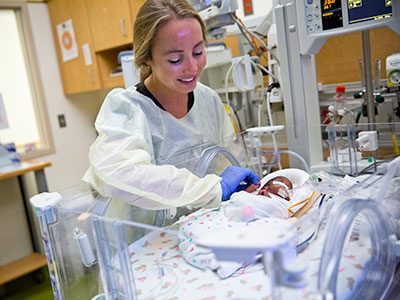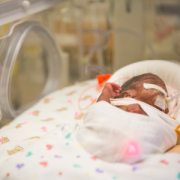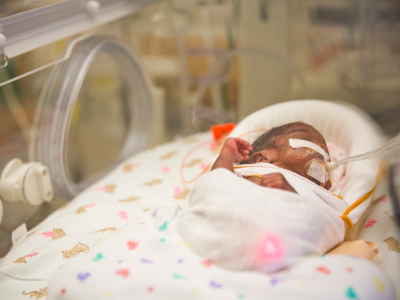The impact of surveillance imaging to detect relapse in Wilms tumor patients

Dr. Jeffrey Dome, M.D., Ph.D., vice president, Center for Cancer and Blood Disorders.
The Children’s Oncology Group published an article in the Journal of Clinical Oncology looking at the impact that surveillance imaging has on patients with Wilms tumor (WT), the most common kidney cancer in children.
Despite the risks and costs, the use of computed tomography (CT) for routine surveillance to detect recurrence in patients with WT has increased in recent years. The rationale for using CT scans rather than chest x-rays (CXR) and abdominal ultrasounds (US) is that CT scans are more sensitive, thereby enabling recurrences to be detected earlier.
In this study, led by Jeffrey S. Dome, M.D., Ph.D, vice president of the Center for Cancer and Blood Disorders at Children’s National Health System, researchers conducted a retrospective analysis of patients enrolled in the fifth National Wilms Tumor Study (NWTS-5) who experienced relapse to determine if relapse detection with CT scan correlates with improved overall survival compared with relapse detection by CXR or abdominal US.
A total of 281 patients with favorable-histology WT (FHWT) were included in the analysis. The key findings of the study were that:
- Among patients with relapse after completion of therapy, outcome was improved in patients whose relapse was detected by surveillance imaging rather after signs and symptoms developed.
- A higher disease burden at relapse, defined by the diameter of the relapsed tumor and the number of sites of relapse, was associated with inferior survival.
- Relapses detected by CT scan were detected earlier and were smaller on average than relapses detected by CXR or US.
- However, there was no difference in survival between patients whose relapse was detected by CT versus CXR or US.
An analysis of radiation exposure levels showed that surveillance regimes including CT scans have about seven times the radiation exposure compared to regimens including only CXR and US. Moreover, the cost to detect each recurrence reduced by 50 percent when CXR and US are used for surveillance.
“The results of this study will be practice changing,” said Dr. Dome, one of the doctors leading the clinical trial. “The extra sensitivity that CT scans provide compared to CXR and US do not translate to improved survival and are associated with the downsides of extra radiation exposure, cost and false-positive results that can lead to unnecessary stress and medical interventions,” he added. “Although counter-intuitive, the more sensitive technology is not necessarily better for patients.”
In conclusion, the doctors found that the elimination of CT scans from surveillance programs for unilateral favorable histology Wilms tumor is unlikely to compromise survival. However, it could result in substantially less radiation exposure and lower health care costs. Overall, the risk-benefit ratio associated with imaging modalities should be considered and formally studied for all pediatric cancers.
Learn more about this research in a podcast from the Journal of Clinical Oncology.
Affiliations
Elizabeth A. Mullen, Dana-Farber Cancer Institute/Boston Children’s Cancer and Blood Disorders Center, Boston, MA; Yueh-Yun Chi and Emily Hibbitts, University of Florida, Gainesville, FL; James R. Anderson, Merck Research Laboratories, North Wales, PA; Katarina J. Steacy, University of Maryland Medical Center, Baltimore, MD; James I. Geller, Cincinnati Children’s Hospital Medical Centre, Cincinnati, OH; Daniel M. Green, St Jude Children’s Research Hospital, Memphis, TN; Geetika Khanna, Washington University School of Medicine, St Louis, MO; Marcio H. Malogolowkin, University of California at Davis Comprehensive Cancer Center, Sacramento, CA; Paul E. Grundy, Stollery Children’s Hospital, University of Alberta, Alberta; Conrad V. Fernandez, University, Halifax, Nova Scotia, Canada; and Jeffrey S. Dome, Children’s National Health System, George Washington University School of Medicine and Health Sciences, Washington, D.C.







